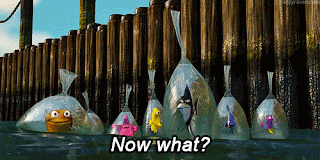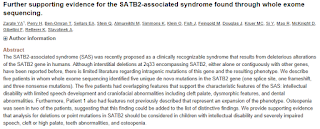Also, I'm skipping over all the "Breathe, you are doing fine!" stuff, because I'm not good at that, and one thing I have learned as a special needs parent is to play to my strengths. Which is making lists.
So, your child was just diagnosed with SATB2. Now what?
1. Get your child on a waiting list for social services. Medicaid waivers, etc. You can contact a social worker to help with this. In Texas where I live, it is a 10-13 year wait list to receive ANY services. So get on the lists NOW.
2. I am sure you are already doing therapy, but read up on the apraxia! Many SATB2 kids were diagnosed with Apraxia before receiving the genetic diagnosis. The K-SLP approach to treating apraxia is very popular, and has helped several SATB2 kids. The PROMPT method of speech therapy, a great starting point, and the Padovan method. I haven't tried that last one, but many moms have and say it is fantastic. Not common in the US, but is more so in Europe, from what I have heard.
3. Apply for grants/ find funding for therapy. We have spent tens of thousands of dollars on Chelsea's therapy over the years. Call insurance and max out those benefits! We pay outrageous premiums, so you bet I will be making them pay huge bills every year!
4. Figure out IEPs. If your child is 0-3 (at least in the US), they should be getting in-home services. Once they turn 3, they will be going to a district special education preschool with an IEP "Individualized Education Program". The best books for that are the Wrightslaw books "All About IEPs" (beginner level), "Emotions to Advocacy" (intermediate), and then they have special ed law books that are awesome once you know what is going on.
5. Get a team of specialists! Neurologist (Chelsea had non-convulsive seizures I didn't know about until she was 4), geneticist, speech therapist, occupational therapist, neuropsychologist, etc. Dr. Z, the geneticist researching this syndrome, has a great website that has a list of the tests you should have done, therapy recommendations, etc. He has published several articles and hosted our first ever SATB2 conference this year.
6. Explore different ways of communication. Not all SATB2 kids talk. In fact, very few do. So, do you want to pursue speech therapy? Use sign language? A picture exchange system (PECS)? An iPad with a language program? There are SATB2 kids that use one or several of these. My Chelsea started out with PECS, and now uses a combination of sign language and speech approximations to communicate. Find out what works best for YOUR child.
7. Don't give up!!! When I first met with the "professionals", they told me to never expect Chelsea to be potty trained, or to speak, or read. I told them challenge accepted (and thought some much less friendly things) and dove in. Chelsea is 6 and a half now, and learning to read, can communicate needs and most wants, and has been potty trained for a year.
Further Reading: Speech Therapy
Meeting Nancy Kaufman: The Lady Who Developed K-SLP
ASL: Start Signing!
Further Reading: At Home
Further Reading: School
Further Reading: Specialists
Dr. Z's website: This is the OFFICIAL SATB2 site!
Teaching Your SATB2 Child to Read:















